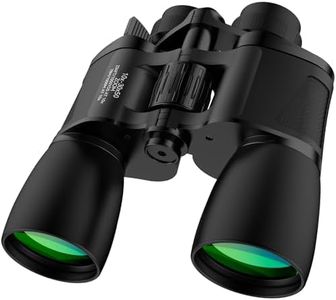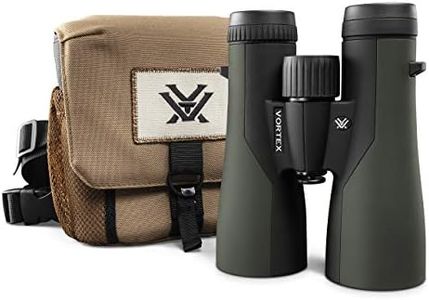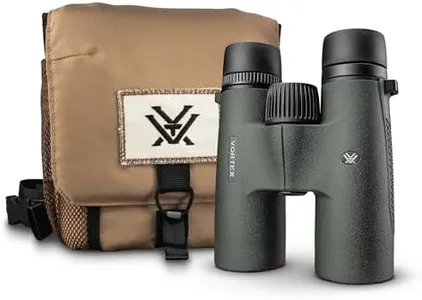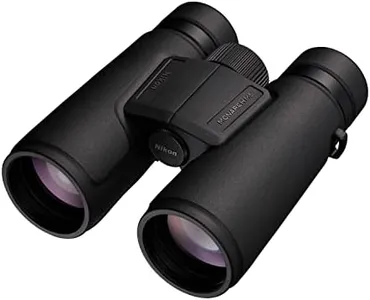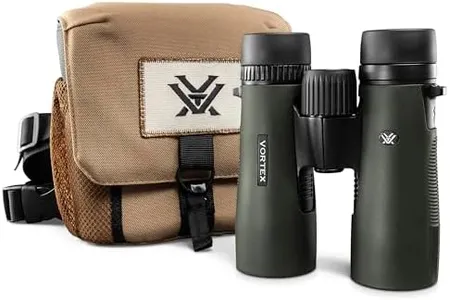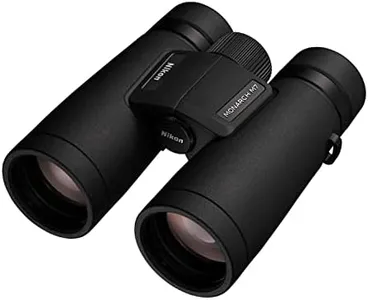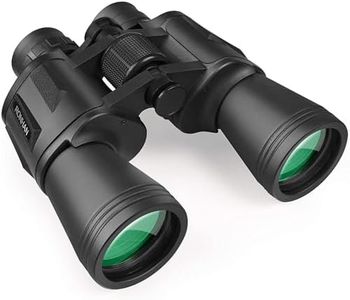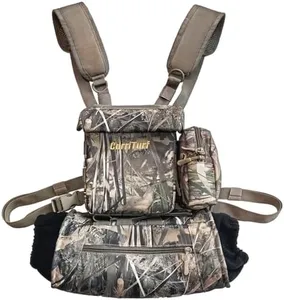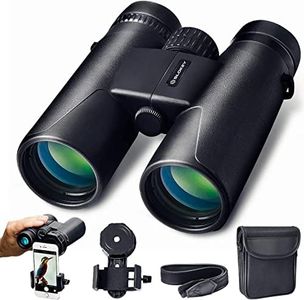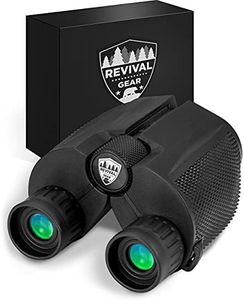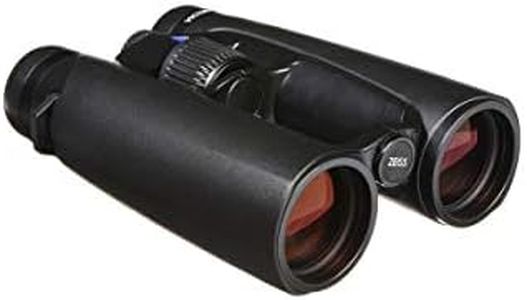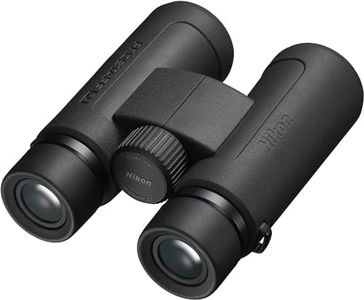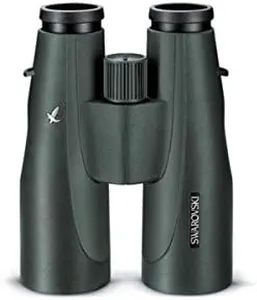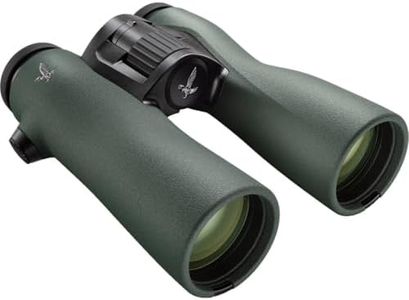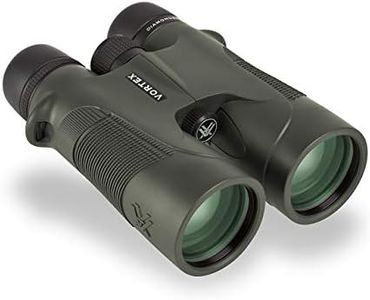10 Best Hunting Binoculars 2025 in the United States
Our technology thoroughly searches through the online shopping world, reviewing hundreds of sites. We then process and analyze this information, updating in real-time to bring you the latest top-rated products. This way, you always get the best and most current options available.

Our Top Picks
Winner
Vortex Optics Crossfire HD 12x50 Binoculars - HD Optical System, Tripod Adaptable, Rubber Armor, Waterproof, Fogproof, Shockproof, Included GlassPak - Unlimited, Unconditional Warranty
Most important from
3006 reviews
The Vortex Optics Crossfire HD 12x50 Binoculars stand out as a solid choice for hunting enthusiasts, providing a useful combination of features that cater to outdoor conditions. With a 12x magnification and 50mm objective lenses, they excel in delivering clear and sharp images, allowing hunters to spot distant wildlife with ease. The fully multi-coated lenses enhance light transmission, ensuring good visibility even in lower light conditions, which is often crucial during early morning or late evening hunts.
Durability is a key strength of these binoculars. They are designed to withstand various environmental challenges, being waterproof, fogproof, and shockproof. The rubber armor provides a secure grip, making them easy to handle in rugged terrain. Additionally, their tripod adaptability is a great advantage for those who prefer steady viewing when scanning the landscape.
On the downside, the weight of 1.84 pounds may be noticeable for some users during long treks. While the 12x magnification is beneficial, it can make the image shaky without a steady hand or tripod, particularly for users who are not accustomed to higher magnifications. Furthermore, while the included GlassPak is a nice touch for protection, its bulkiness might not appeal to everyone. The adjustable eyecups are a thoughtful feature, accommodating users with or without eyeglasses. However, new users might take some time to fully appreciate the diopter adjustment, which is essential for getting the best viewing experience.
The Vortex Optics Crossfire HD 12x50 Binoculars are well-suited for hunting, offering impressive optics and solid construction. They may not be the lightest option available, but their durability and optical performance make them a worthy investment for serious hunters.
Most important from
3006 reviews
Vortex Optics Triumph HD 10x42 Binoculars - HD Optical System, Fully Multi-Coated Lenses, Rubber Armor, Tripod Adaptable, Waterproof, Fogproof, Shockproof - Unlimited, Unconditional Warranty
Most important from
1271 reviews
The Vortex Optics Triumph HD 10x42 Binoculars are a solid choice for hunting and outdoor activities. With a 10x magnification and 42mm objective lenses, they provide clear and detailed views. The HD optical system and fully multi-coated lenses ensure excellent resolution, color fidelity, and light transmission, making them reliable in various lighting conditions.
These binoculars are also quite durable; the nitrogen-purged, waterproof, and fog-proof design ensures they can withstand harsh weather conditions. The polycarbonate chassis with rubber armor adds to their shock resistance and provides a comfortable grip, which is essential during extended use. They are tripod adaptable, and features like adjustable eyecups and diopter make them customizable for user comfort.
Accessories such as a neck strap and an adjustable GlassPak harness enhance portability and ease of use. Additionally, the unlimited, unconditional lifetime warranty offers peace of mind for long-term use. Nevertheless, at 1.04 kilograms, they might be slightly heavy for some users. These binoculars are ideal for adults who enjoy hunting, bird watching, or hiking and value a blend of performance and durability in their gear.
Most important from
1271 reviews
Nikon Monarch M5 10x42 Binocular | Waterproof, fogproof, Rubber-Armored Binocular with ED Glass, Long Eye Relief | Official Nikon USA Model
Most important from
183 reviews
The Nikon Monarch M5 10x42 Binoculars offer a solid choice for hunting enthusiasts. With a magnification of 10x and a 42mm objective lens diameter, they provide clear and detailed views, which is critical for spotting game from a distance. The binoculars are relatively compact and lightweight at 1.41 pounds, making them easy to carry on long hunting trips.
Durability is a highlight, with a rubber-armored exterior for shock resistance and a waterproof and fogproof design, ensuring reliable performance in various weather conditions. The ED glass lenses and phase-corrected dielectric-coated prisms enhance image clarity and color accuracy, which are significant advantages in low-light environments.
Long eye relief and comfortable twist-up eyecups accommodate users with glasses, providing a pleasant viewing experience. Potential downsides include some may find the size slightly bulkier compared to other compact models. However, these drawbacks are minor compared to the performance benefits. These binoculars are well-suited for serious hunters looking for robust, high-quality optics.
Most important from
183 reviews
Buying Guide for the Best Hunting Binoculars
Choosing the right hunting binoculars can significantly enhance your outdoor experience. Binoculars are essential for spotting game from a distance, ensuring you can plan your approach without disturbing the animals. When selecting hunting binoculars, it's important to consider several key specifications that will affect their performance and suitability for your needs. Understanding these specs will help you make an informed decision and find the best fit for your hunting adventures.FAQ
Most Popular Categories Right Now
